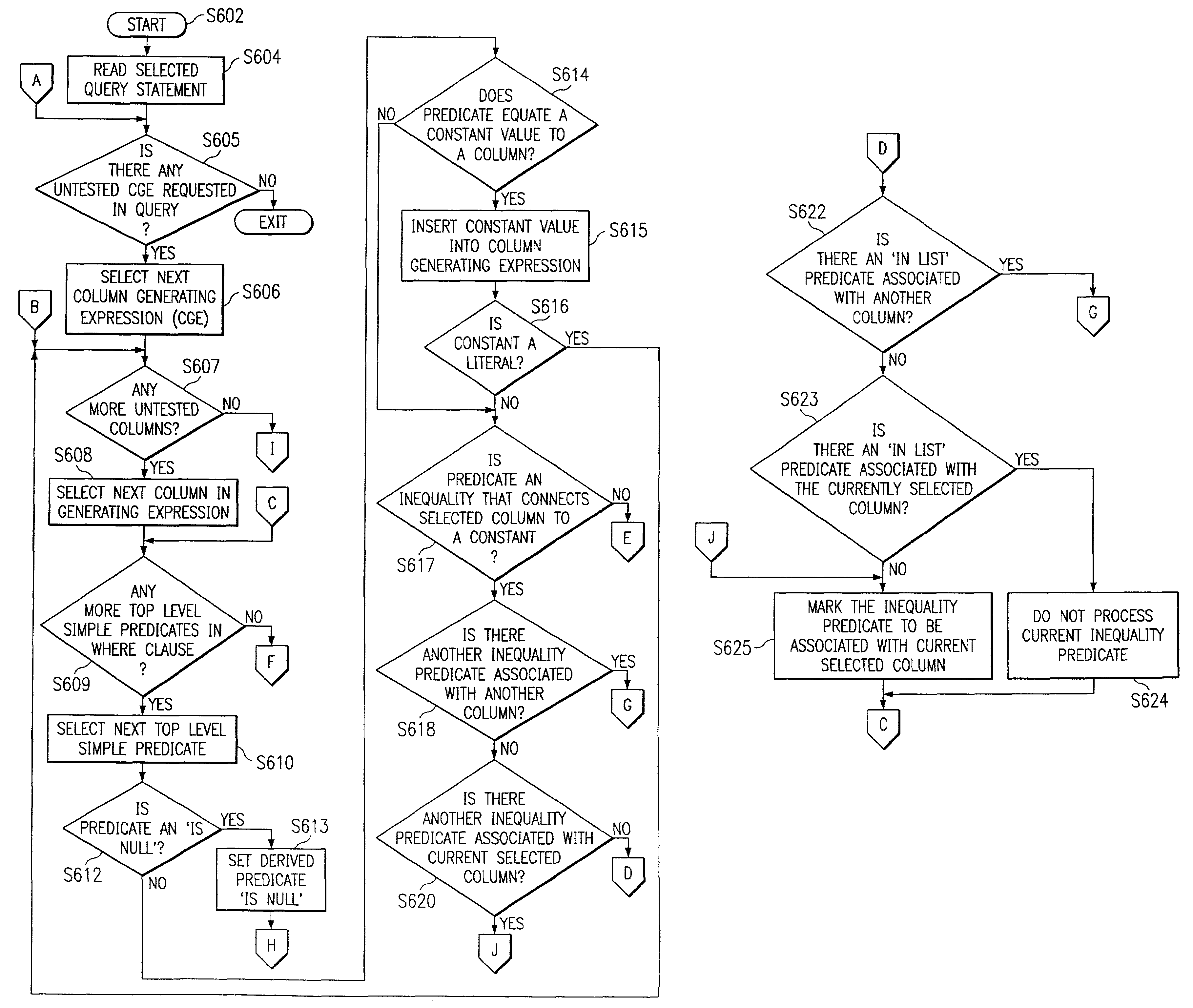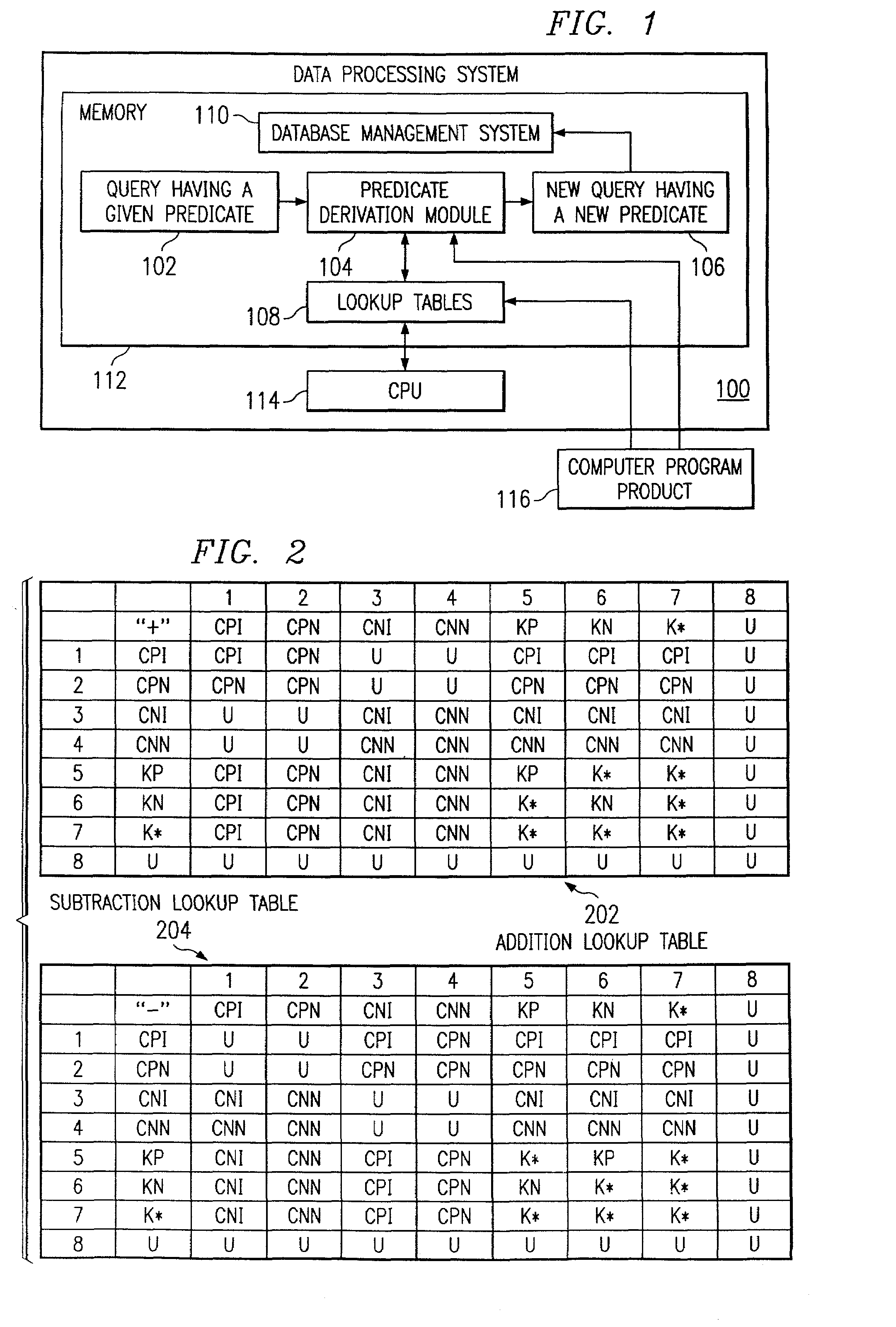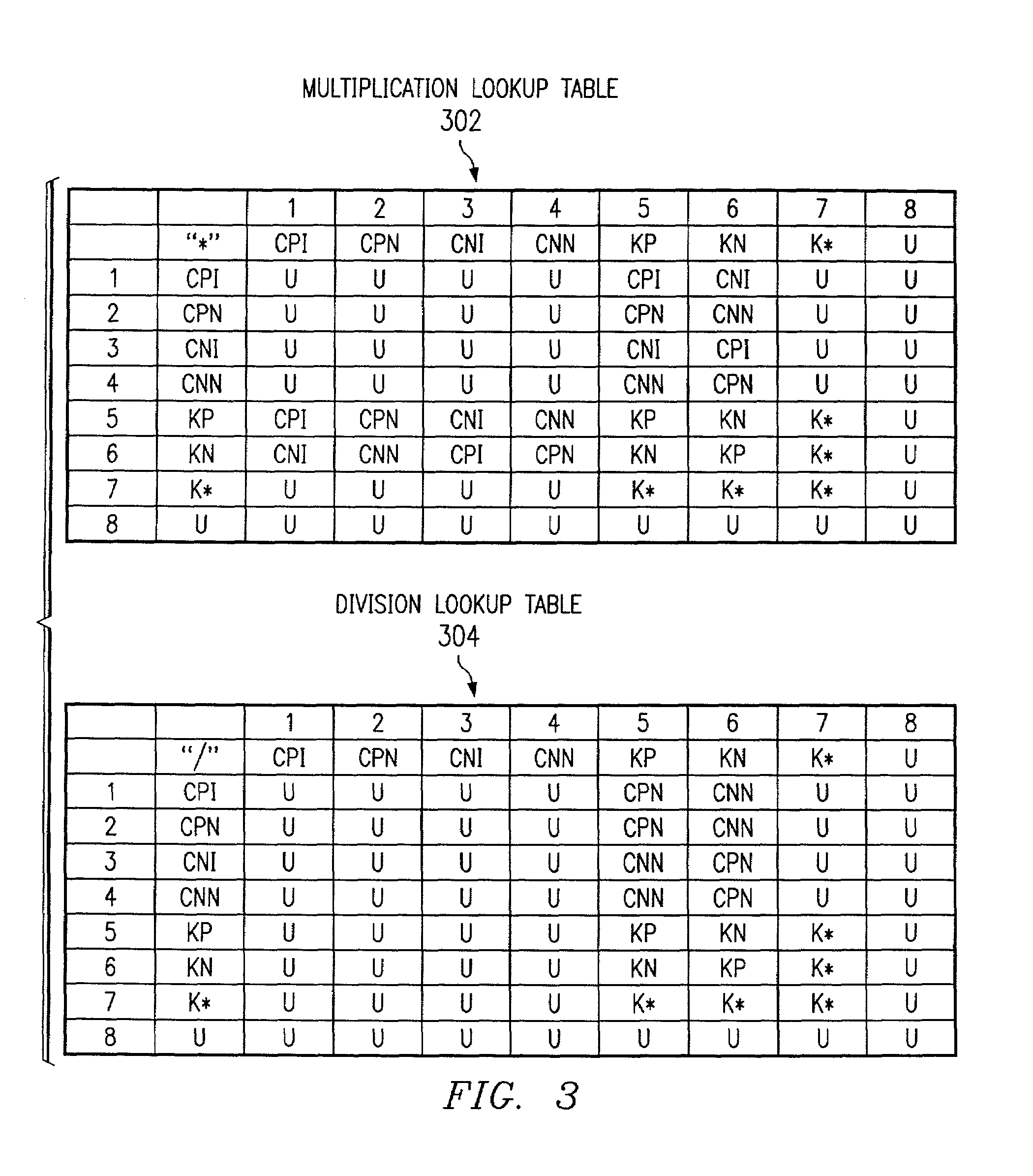Optimizing database query by generating, determining the type of derived predicate based on monotonicity of the column generating expression for each remaining inequality predicate in the list of unexamined predicates
a database and predicatization technology, applied in the field of deriving query predicates, can solve the problems of large amount of processing resources of dbms, and achieve the effects of reducing resource consumption, improving efficiency, and reducing the number of resources
- Summary
- Abstract
- Description
- Claims
- Application Information
AI Technical Summary
Benefits of technology
Problems solved by technology
Method used
Image
Examples
example 1
[0058]A given SQL query statement includes a given predicate (which can be found in a WHERE clause) for operation on a table, which is:
[0059]‘A=10 AND B=20’
A column generating expression G(C) was previously applied to the table and the table includes a generated column G. The column generating expression G(C) (which involves two columns A and B of the table can be found in a catalogue) is:
[0060]A+B
[0061]In this case, predicate derivation module 104 does not need to determine the type of monotonicity for the generating expression because this is a case of equality-type predicates. The given predicate is a complex predicate including a first basic predicate (that is, A=10) and a second basic predicate (that is, B=20). The first basic predicate includes an operand ‘A’ (a variable) and an operand ‘10’ (a constant) which are connected together by operator ‘=’ (that is, the equality operator). The second basic predicate includes an operand ‘B’ (a variable) and an operand ‘20’ (a constant)...
example 2
[0066]A second example SQL query statement includes a given predicate (which can be found in a WHERE clause) for operation on a table, which is:
[0067]‘B IS NULL’
A column generating expression G(C) was previously applied to the table and the table includes a generated column G. The column generating expression G(C) is:
[0068]A+B
[0069]Because B IS NULL, it does not matter what value A has. Therefore, G is, effectively, a function of both columns of the original query. Further, predicate derivation module 104 does not need to determine the type of monotonicity for the column generating expression. Predicate derivation module 104 of FIG. 1 reads the SQL query statement, performs operations for subsequently generating a derived predicate. Predicate derivation module generates the derived predicate, which is:
[0070]G IS NULL
The derived predicate is ANDed with the original WHERE clause, and the result provides a new WHERE clause which is:
[0071]WHERE B IS NULL AND G IS NULL
The original WHERE ...
example 3
[0098]A given SQL query statement specifies a column generating expression for generating a generated column G2. The column generating expression is:
[0099]SUBSTR(NAME, 1,3)
[0100]The column generating expression is determined to be monotonic not decreasing (that is, ‘CPN’). SUBSTR is, by its nature, monotonic nonincreasing, if the starting point (the second operand) is the constant “1”. In this example, the first three characters in a list of strings is in the same order as the original strings. The SQL query statement also includes a WHERE clause including a given predicate, which is:
[0101]WHERE NAME BETWEEN ‘BAKER’ and ‘JONES’
Predicate derivation module 104 of FIG. 1 reads the SQL query statement, performs operations for subsequently generating a derived predicate. The generated derived predicate is:
[0102]G2 BETWEEN SUBSTR(‘BAKER’,1,3) AND SUBSTR(‘JONES’,1,3)
[0103]The derived predicate term is ANDed to the original WHERE clause, which results in a new WHERE clause which is:
[0104]WH...
PUM
 Login to View More
Login to View More Abstract
Description
Claims
Application Information
 Login to View More
Login to View More - R&D
- Intellectual Property
- Life Sciences
- Materials
- Tech Scout
- Unparalleled Data Quality
- Higher Quality Content
- 60% Fewer Hallucinations
Browse by: Latest US Patents, China's latest patents, Technical Efficacy Thesaurus, Application Domain, Technology Topic, Popular Technical Reports.
© 2025 PatSnap. All rights reserved.Legal|Privacy policy|Modern Slavery Act Transparency Statement|Sitemap|About US| Contact US: help@patsnap.com



